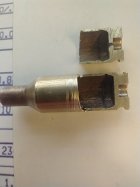The answer to your original question “are your measuring methods suspect” is yes.
Assuming you are using the Hornady tool with the dummy case, most of your confusion is probably there.
Have you measured case base to shoulder datum of the Hornady case? Most likely it will be different than the same measurement on your brass. Best is to make a custom case based on a fired case, sized as you will actually shoot it.
You have two things going on. Headspace, bolt face to shoulder contact point in the chamber, and bolt face to bullet contact at the lands. You said that you are seating the bullet to touch the lands. Technically you are headspacing off the bullet, not the shoulder of the brass. In a perfect world, or brass sized the same, both points would be touching. That’s why the Hornady tool case needs to be the same size as what you shoot to have any real meaning.
The cartridge overall length Should remain constant with the bullet touching the lands. That’s base to bullet ogive. But headspace could vary, base to shoulder. That’s why it is possible to to have different headspace measurements and the same overall length. When you are loading to a touch or jam, the headspace is determined more or less by neck length, the distance from the shoulder to bullet ogive. More neck, less body, is more headspace, more gap between case shoulder and chamber. The bullet is touching.
More body, less headspace will give You the same overall length, with the same bullet touch.
This is easier seen with a jump. The jump distance will change with a headspace change when moving the shoulder. As base to shoulder distance changes, you push or pull the neck back and forth.
The Hornady gauge gets even less precise if the shoulder angle is different than the brass you are shooting.
There is a learning curve to learning to use the tools and being able to trust the measurements, that curve is reduced by using a case sized as it will be shot. I would bet that measuring the Hornady case might clear up a lot of your confusion.












